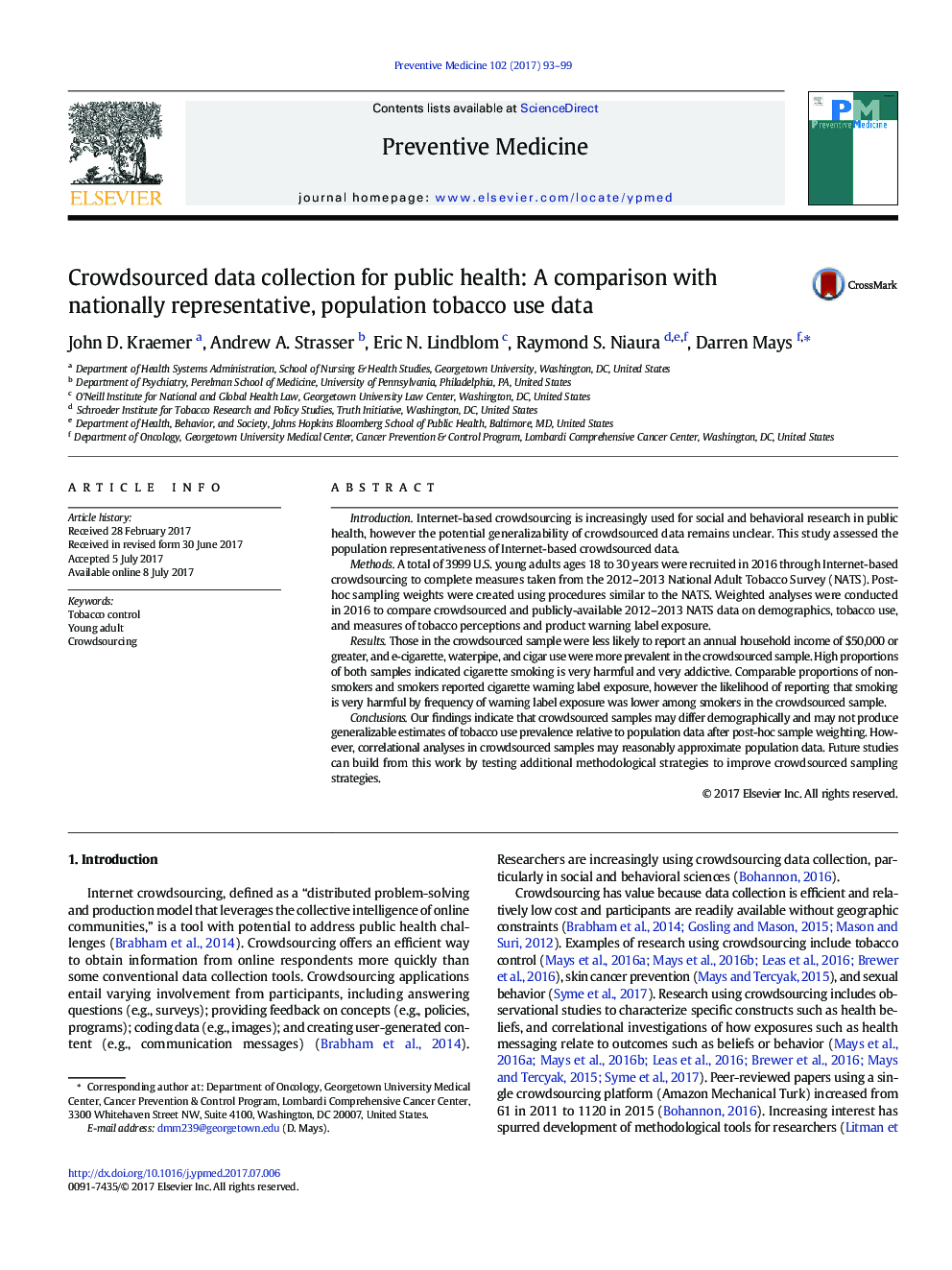| کد مقاله | کد نشریه | سال انتشار | مقاله انگلیسی | نسخه تمام متن |
|---|---|---|---|---|
| 5635574 | 1581612 | 2017 | 7 صفحه PDF | دانلود رایگان |
- Comparison of crowdsourced and population data on tobacco use and related measures
- Crowdsourced data differ on demographics and noncigarette tobacco use after weighting.
- Correlational analyses in crowdsourced data generally reflected population survey.
- Research on ways to improve generalizability of crowdsourcing is needed.
IntroductionInternet-based crowdsourcing is increasingly used for social and behavioral research in public health, however the potential generalizability of crowdsourced data remains unclear. This study assessed the population representativeness of Internet-based crowdsourced data.MethodsA total of 3999 U.S. young adults ages 18 to 30Â years were recruited in 2016 through Internet-based crowdsourcing to complete measures taken from the 2012-2013 National Adult Tobacco Survey (NATS). Post-hoc sampling weights were created using procedures similar to the NATS. Weighted analyses were conducted in 2016 to compare crowdsourced and publicly-available 2012-2013 NATS data on demographics, tobacco use, and measures of tobacco perceptions and product warning label exposure.ResultsThose in the crowdsourced sample were less likely to report an annual household income of $50,000 or greater, and e-cigarette, waterpipe, and cigar use were more prevalent in the crowdsourced sample. High proportions of both samples indicated cigarette smoking is very harmful and very addictive. Comparable proportions of non-smokers and smokers reported cigarette warning label exposure, however the likelihood of reporting that smoking is very harmful by frequency of warning label exposure was lower among smokers in the crowdsourced sample.ConclusionsOur findings indicate that crowdsourced samples may differ demographically and may not produce generalizable estimates of tobacco use prevalence relative to population data after post-hoc sample weighting. However, correlational analyses in crowdsourced samples may reasonably approximate population data. Future studies can build from this work by testing additional methodological strategies to improve crowdsourced sampling strategies.
Journal: Preventive Medicine - Volume 102, September 2017, Pages 93-99
